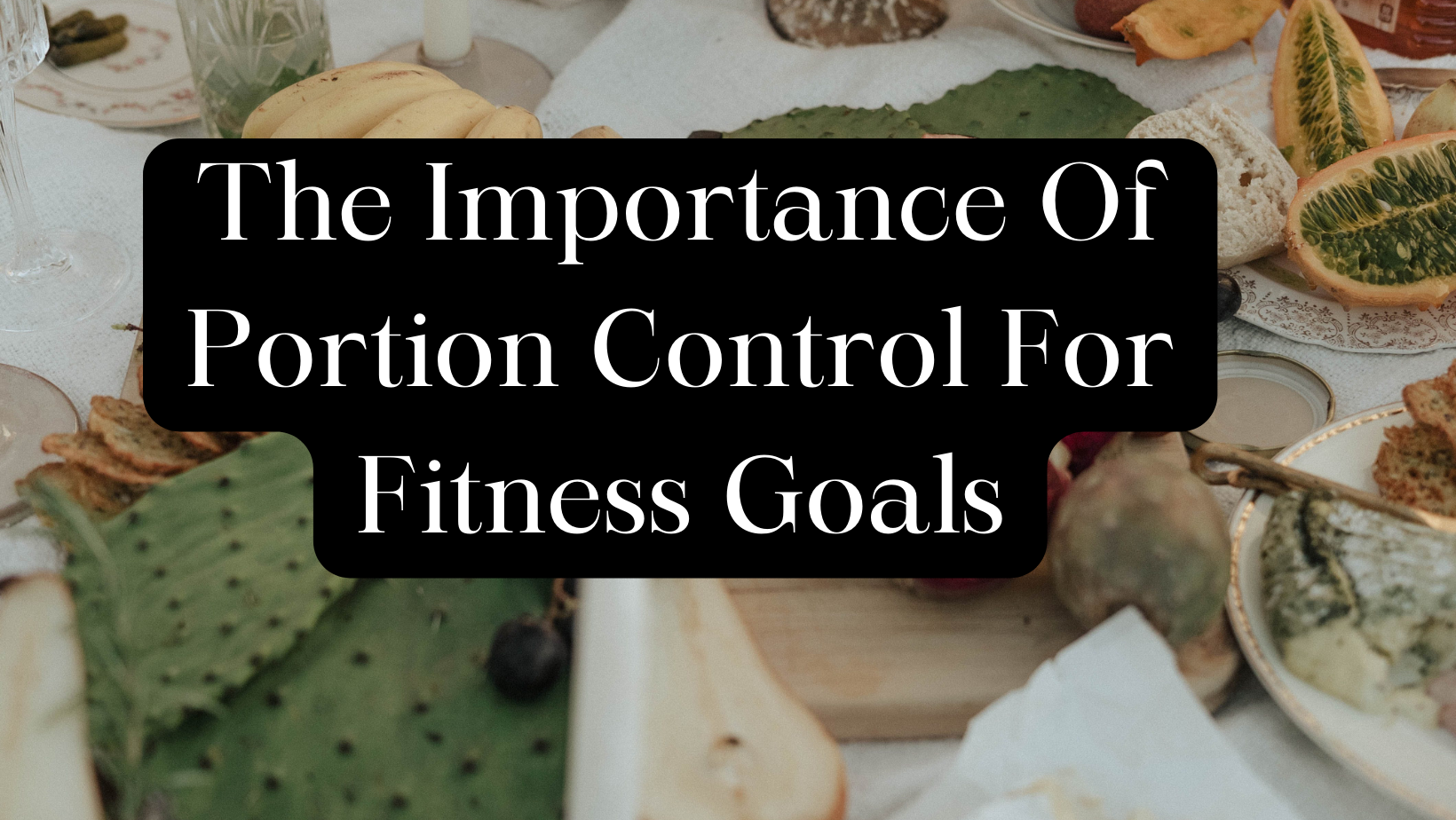Achieving your fitness goals goes beyond just hitting the gym regularly; it extends to maintaining a balanced diet as well. One key aspect of maintaining a healthy diet is portion control. Controlling your portion sizes not only helps you in managing your weight, but it also supports your overall fitness goals. By being mindful of the quantities of food you consume, you can effectively regulate your calorie intake and ensure that you are providing your body with the right amount of nutrition it needs. So how do you determine the recommended portion sizes, especially if you have an active lifestyle? Let’s explore the importance of portion control and how it can contribute to your fitness journey.
Portion control plays a crucial role in maintaining a healthy weight, keeping your calorie intake in check, and optimizing your performance. By understanding the concept of portion control, the relationship between portion control and fitness, the factors that affect portion control, and the recommended portion sizes for active individuals, you can take control of your nutrition and make significant strides towards achieving your fitness goals.
Understanding Portion Control
To begin, let’s define what exactly portion control means. Portion control refers to the practice of managing your food intake by consuming appropriate amounts of different food groups. It is not about restricting yourself or following a strict diet, but rather about finding a healthy balance in your eating habits. By being mindful of portion sizes, you ensure that you are not overeating and are meeting your body’s nutritional needs in a healthier way.
The role of portion control in maintaining a healthy weight cannot be overstated. By controlling your portion sizes, you can prevent overeating and excess calorie consumption, which can lead to weight gain. This is particularly important for individuals with active lifestyles who need to nourish their bodies adequately without going overboard. Portion control allows you to strike the right balance between consuming enough energy to fuel your activities and avoiding excessive calorie intake.
It is crucial to distinguish between serving sizes and portion sizes. Serving sizes are standardized measurements determined by food manufacturers and are often listed on food labels. These serving sizes may not always align with what you actually consume. Portion sizes, on the other hand, refer to the amount of food you choose to eat. Understanding the difference between the two can help you make more informed choices and practice portion control effectively.
The Relationship Between Portion Control and Fitness
Now that we have a grasp of what portion control entails, let’s delve into its relationship with fitness. Portion control directly contributes to achieving your fitness goals by helping you balance the number of calories you consume with the number of calories you burn.
By controlling your portion sizes, you can strike a balance between the calories you take in and the calories you burn through physical activity. This balance is crucial for weight management, whether you are looking to lose weight, gain muscle, or maintain your current physique. Through portion control, you can ensure that you are not overloading your body with excess calories that will hinder your progress.
Factors Affecting Portion Control
While portion control may seem straightforward, various factors can influence your ability to maintain it consistently. Environmental and social influences can play a significant role in the portion sizes you choose. For example, if you are eating out at a restaurant where large portions are the norm, you may find it challenging to control your own portion sizes. Similarly, social settings can influence your eating habits, with peer pressure or the desire to fit in potentially leading to larger portion sizes.
Psychological Factors
Psychological factors also come into play when it comes to portion control. Emotional eating, stress, and food cravings can all affect the portion sizes you choose. It is important to be aware of these psychological influences and find healthy coping mechanisms that do not involve overeating.
Food Marketing
Food marketing also plays a role in portion control. Clever advertising and packaging can create a perception of larger portion sizes or push for consuming more than necessary. Being aware of these marketing tactics can help you make more informed choices and resist falling into the trap of oversized portions.

Recommended Portion Sizes for Active Individuals
For individuals with active lifestyles, understanding recommended portion sizes is crucial to meet their nutritional needs effectively. When determining your daily caloric needs, factors such as age, gender, weight, activity level, and fitness goals must be taken into account. Consulting with a registered dietitian or nutritionist can help you determine your specific caloric requirements and tailor portion sizes accordingly.
In general, active individuals require slightly higher portion sizes to fuel their activities adequately. It is recommended to focus on consuming a balanced mix of macronutrients, including proteins, carbohydrates, and fats, in appropriate portion sizes.
You May Also Like
Protein
Protein is essential for muscle building and repair. Aim for a portion size of about 3-4 ounces of protein sources like lean meats, poultry, fish, or plant-based alternatives per meal. Including a source of protein at every meal can help you meet your nutritional needs and support your fitness goals.
Carbohydrate
Carbohydrates provide energy for physical activities, and whole grains, fruits, and vegetables are excellent sources. For carbohydrates, focus on filling about a quarter of your plate with whole grains or starchy vegetables and another quarter with non-starchy vegetables.
Fat
When it comes to fats, it is important to choose healthy sources such as avocados, nuts, and olive oil. While fats are essential for various bodily functions, they are also high in calories, so portion control is crucial. Aim for about a thumb-sized portion of healthy fats per meal.
In addition to these macronutrients, it is important to incorporate a variety of fruits and vegetables into your diet. These provide essential vitamins, minerals, and fiber to support overall health and fitness.
By understanding portion control, recognizing its significance in maintaining a healthy weight, considering the factors that affect portion control, and following recommended portion sizes for active individuals, you can make informed choices to support your fitness goals. With practice, portion control can become a natural part of your lifestyle, helping you achieve the balance and nutrition necessary for optimal performance and a healthier, fitter you.




